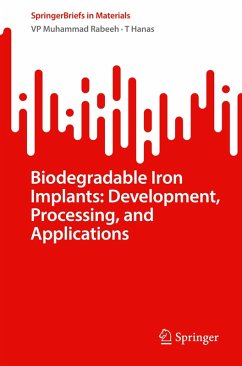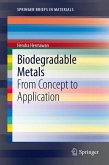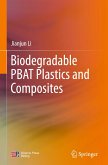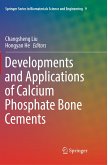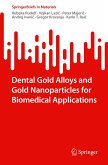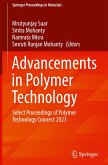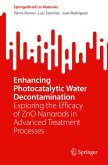This book offers a comprehensive guide to iron-based biodegradable metals (BMs) for temporary implant applications, addressing the need for medical implants that can safely degrade within the human body, thereby eliminating the necessity for additional surgeries and reducing long-term complications. Beginning with an introductory overview of BMs, it explains their significance in modern medicine and outlines the essential requirements for these materials and a comparative analysis of magnesium, zinc, and iron-based alloys. This chapter lays the foundation for understanding BMs' role in advancing healthcare solutions.
The second chapter focuses on the interaction between iron and the human body, detailing iron's degradation and mechanical characteristics in the physiological environment. It explains the potential degradation routes of iron both in vitro and in vivo, while discussing the advantages and limitations of iron as a BM for temporary implants, supported by references to relevant literature.
The third Chapter looks at recent advancements in manufacturing techniques aimed at improving the effectiveness and safety of iron-based implants. It emphasizes material fabrication and explores various manufacturing routes, including powder metallurgy, casting, and additive manufacturing. The performance of components made through different methods in the physiological environment is also examined.
In Chapter four, the book covers various metallurgical and surface modification techniques such as alloying, surface treatments, and composite fabrication. It highlights the importance of post-processing developed materials to enhance the properties of iron implants, ensuring controlled degradation and maintaining mechanical strength during the healing process. This chapter provides valuable insights into how to process and customize the characteristics of iron to meet specific medical needs, particularly in cardiovascular and orthopedic medicine.
The fifth chapter explores the potential applications of iron-based BMs in various medical fields. It discusses possible uses in cardiovascular, orthopedic, and other medical applications, based on reported literature. The final chapter provide a Summary & Future Prospective of Fe based degradable implants.
Overall, this book is targeted at individuals in the fields of biomedical engineering, materials science, and medical practice who are engaged in the development and utilization of medical implants. It aims to significantly advance ongoing efforts by shedding light on novel materials and manufacturing techniques in medical technology.
The second chapter focuses on the interaction between iron and the human body, detailing iron's degradation and mechanical characteristics in the physiological environment. It explains the potential degradation routes of iron both in vitro and in vivo, while discussing the advantages and limitations of iron as a BM for temporary implants, supported by references to relevant literature.
The third Chapter looks at recent advancements in manufacturing techniques aimed at improving the effectiveness and safety of iron-based implants. It emphasizes material fabrication and explores various manufacturing routes, including powder metallurgy, casting, and additive manufacturing. The performance of components made through different methods in the physiological environment is also examined.
In Chapter four, the book covers various metallurgical and surface modification techniques such as alloying, surface treatments, and composite fabrication. It highlights the importance of post-processing developed materials to enhance the properties of iron implants, ensuring controlled degradation and maintaining mechanical strength during the healing process. This chapter provides valuable insights into how to process and customize the characteristics of iron to meet specific medical needs, particularly in cardiovascular and orthopedic medicine.
The fifth chapter explores the potential applications of iron-based BMs in various medical fields. It discusses possible uses in cardiovascular, orthopedic, and other medical applications, based on reported literature. The final chapter provide a Summary & Future Prospective of Fe based degradable implants.
Overall, this book is targeted at individuals in the fields of biomedical engineering, materials science, and medical practice who are engaged in the development and utilization of medical implants. It aims to significantly advance ongoing efforts by shedding light on novel materials and manufacturing techniques in medical technology.

